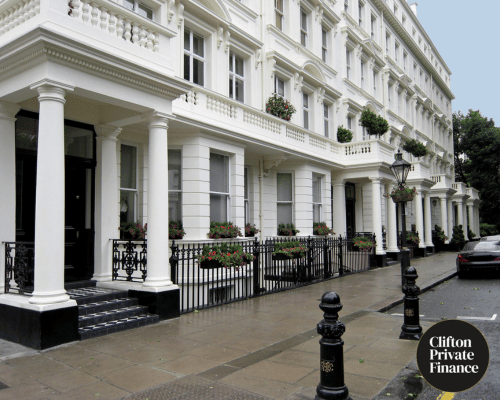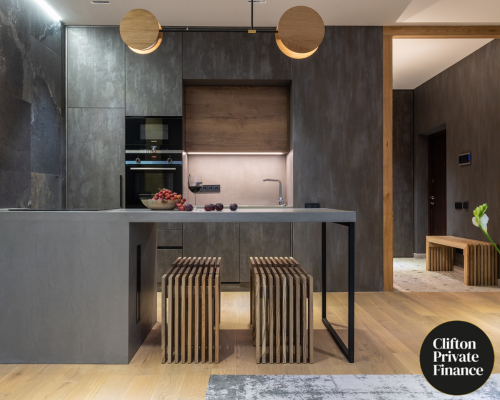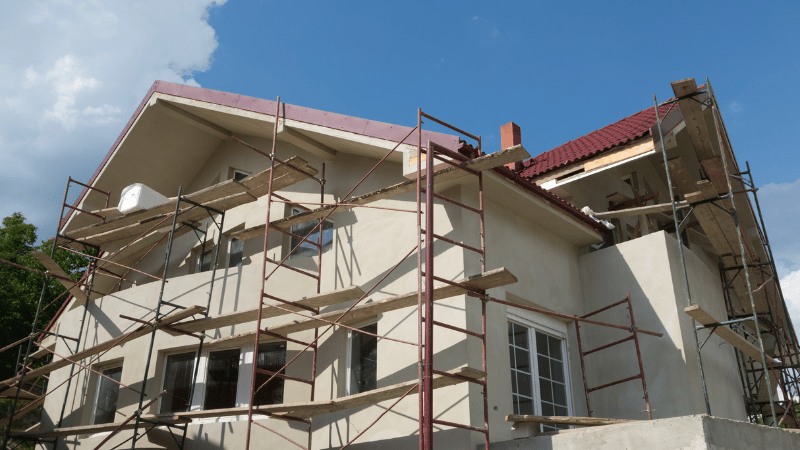Categories
What is Top-Slicing in Buy-to-Let Mortgage Borrowing?

Becoming a landlord remains one of the most effective ways to invest in the UK. Despite occasional headlines regarding market instabilities and fluctuating interest rates, property still delivers - both through monthly rental income profits and property value growth.
Increasingly tight regulations mean thorough understanding and careful management are essential.
What is top-slicing? How does it work and is it right for you? Our experts at Clifton Private Finance explain everything you need to know.
And to speak to an advisor about your own BTL mortgage eligibility with a top-slicing solution, book a call below:
Compare the Latest BTL Mortgage Options
Key Takeaways
- Top-slicing lets landlords use personal income to cover shortfalls in rental income during affordability checks for buy-to-let mortgages.
- Stricter post-2008 regulations mean lenders apply tough stress tests, often making rental income alone insufficient.
- It’s not a mortgage type, but a lender option, typically requiring broker support to demonstrate sufficient disposable income.
- Can be particularly well-suited to high earners investing in areas with low rental yields but strong capital growth potential (this is where affordability tests can fail based on the project rental income vs the mortgage value).
- Clifton Private Finance can help navigate top-slicing options, working with specialist lenders to secure market-leading mortgage solutions.
What is Buy-to-Let Top-Slicing?
Top-slicing in buy-to-let (BTL) mortgages refers to a process where any deficit in rental yield affordability is covered through an assessment of personal income.
While the origins of the term are unknown, it likely refers to the idea of taking a ‘slice’ from the top of any disposable income to make up the difference between the rental income and affordability requirements set by the lender.
Because affordability tests evaluate a hypothetical mortgage repayment in excess of current rates, the reality is that the real rental yield will typically comfortably cover the mortgage - the high level of regulatory testing is to ensure that should market forces deteriorate in the coming months or years, the borrower is still able to meet their mortgage repayments.
In practice, most landlords who apply top-slicing never need to dip into their salaries to meet a mortgage payment.
Why Are Affordability Tests so High for BTL Mortgages?
Over the years, many changes have been made to ensure lender responsibility when providing mortgages. Following the global market crash of 2008, the Bank of England and UK Government instigated additional checks and balances to ensure the underpinnings of the mortgage landscape were stable.
The provisions exist to provide stability in the marketplace and to protect landlords from stretching beyond their means. While they may seem unnecessary and somewhat onerous, their main remit - to avoid large levels of instability in the mortgage market - has been generally proven to be successful.
Top-slicing provides a level of flexibility for prospective landlords to enter the market where the numbers otherwise don’t add up, giving lenders additional security while removing the barrier to entry in areas where property value is high but rental yields are relatively low.
How Buy-to-Let Affordability is Calculated
The affordability stress test is an evaluation that considers whether the rental yield from the property would cover the mortgage repayment if interest rates were to rise.
All lenders, both major banks and specialised private lenders, are obligated to conduct thorough stress tests before approving a mortgage application.
Affordability stress tests use the following metrics:
- Rental yield - This is the expected gross income from a property, typically considered monthly. Rental yield is assessed by researching rental incomes from similar properties in the area. While there is room for an applicant to argue that the rental yield may be higher - for example, if renovations mean the property has been modernised to a far higher level than its neighbours - the lender’s valuation methods are often inflexible.
- Mortgage rate - This is the true interest rate on offer for the mortgage, and is used as the current baseline.
- Stress test rate - This is the proposed rate to test against. Many lenders use a static PRA base stress test rate, currently set to 5.5%, while others will calculate the rate by taking the mortgage rate and adding 2 to 3% (thus, a mortgage rate of 4.3% may result in a stress test rate of 7.3%).
- Interest cover ratio (ICR) - This is a percentage ratio that provides headroom, adjusting the final calculation to allow for overheads (such as property management and maintenance) and profit. The accurate stress test figure is only reached once the ICR is applied. Standard ICRs are 125% for longer-term fixed rates (such as 5-year fixed) and 145% for shorter terms (2-year fixed), though lender discretion will apply.
The process for calculating the stress test is as follows:

Determine the stress test rate
As described, this is either 5.5% (base), or the offered mortgage rate plus 2-3%.

Calculate the monthly repayment based on the stress test rate
For interest-only mortgages, that form the majority of BTL mortgages, this can be done by taking the mortgage balance, multiplying by the stress test rate, and dividing by 12. For example, a £200,000 mortgage stress tested at 7.3% would equal a monthly repayment of £1,216.67.

Apply the ICR
Adjust the stress test monthly repayment by the ICR. Continuing the example with an ICR of 145%, the final stress test calculation would equal £1,216.67 x 145% = £1,764.17.
How Top-Slicing Works
If the rental yield is short, top-slicing can make the difference between a rejected mortgage and a workable solution.
When top-slicing is applied, the shortfall in the rental yield to affordability stress test comparison is covered by your personal disposable income, similar to the affordability tests applied for a personal residential mortgage.
At Clifton Private Finance, our mortgage team will advise you if top-slicing may be needed and how to apply for the extra consideration.
Note that top-slicing is required purely for the affordability test. Needing to support the BTL mortgage repayment using personal income is not actually required unless the hypothetical interest rate increase becomes an unwanted reality.
Our Recent BTL Mortgage Case Studies
An Example of BTL Top-Slicing
Exploring the example above in further detail, we can understand top-slicing in full.
The Scenario
- Mortgage required - £200,000
- Interest rate - 4.3%
- Term - 2-year fixed rate
- Actual monthly repayment - £716.67
- Stress test rate - 7.3%
- ICR - 145%
- Stress test calculation - £1,764.17
- Rental yield - £1,300.00
- Shortfall (stress test less rental yield) - £464.17/month
Even though the expected rental yield of £1,300 easily covers the actual monthly repayment, the lender’s stress test shows a shortfall of £464.17. The application would fail under standard rules.
This is where top-slicing comes in...
Personal Income Position
- Salary - £60,000 p.a.
- Net monthly income (after tax/NI) - £3,779.79
- Current residential mortgage - £1,732.40/month
- Bills and living costs - £1,100.00
- Existing personal debts - £430.00
- Total personal outgoings (mortgage, expenses, debt) - £3,262.40
- Disposable income (income less outgoings) - £517.39/month
Final Affordability Assessment
In this example, the final disposable income of £517.39 is larger than the rental yield shortfall of £464.17 - the lender can approve the mortgage using top-slicing.
The Pros and Cons of Top-Slicing
- PRO: Allows for investment in property in high-value, low-rent areas.
- PRO: Enables new prospective landlords to enter the UK property investment market.
- CON: Only for those with additional stable incomes and strong disposable income.
- CON: Periods with no tenants can be costly.
- CON: Tax, maintenance, and property management costs must be considered.
Why Use Top-Slicing?
Top-slicing provides flexibility and additional buying power, perfect for:
- High net-worth individuals (HNWI) looking to leverage surplus income.
- Professionals buying property in high-value areas, such as London and the South-East.
- Investments based on high capital growth over rental yield.
- Buying property with a view to renovation.
It is less suitable for:
- Prospective landlords with stretched personal finances.
- Business-level landlords with existing portfolio mortgages.
Top-Slicing with Clifton Private Finance
At Clifton Private Finance, our mortgage team can work hand-in-hand with you to evaluate your buy-to-let and top-slicing options. As whole-market mortgage brokers, we have established relationships with specialist lenders who understand top-slicing and will undertake a full evaluation of your individual situation.















